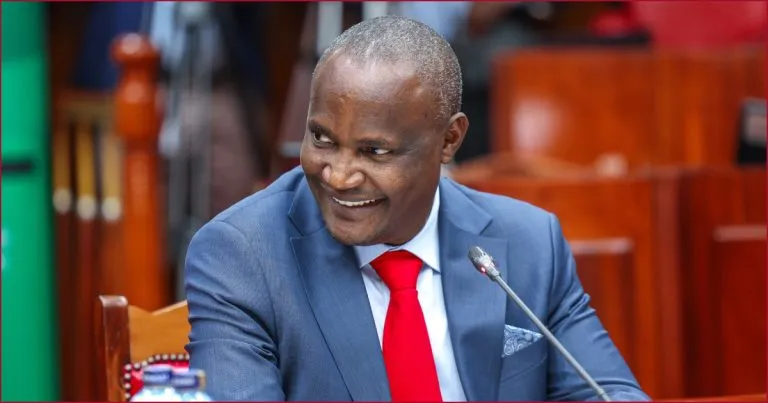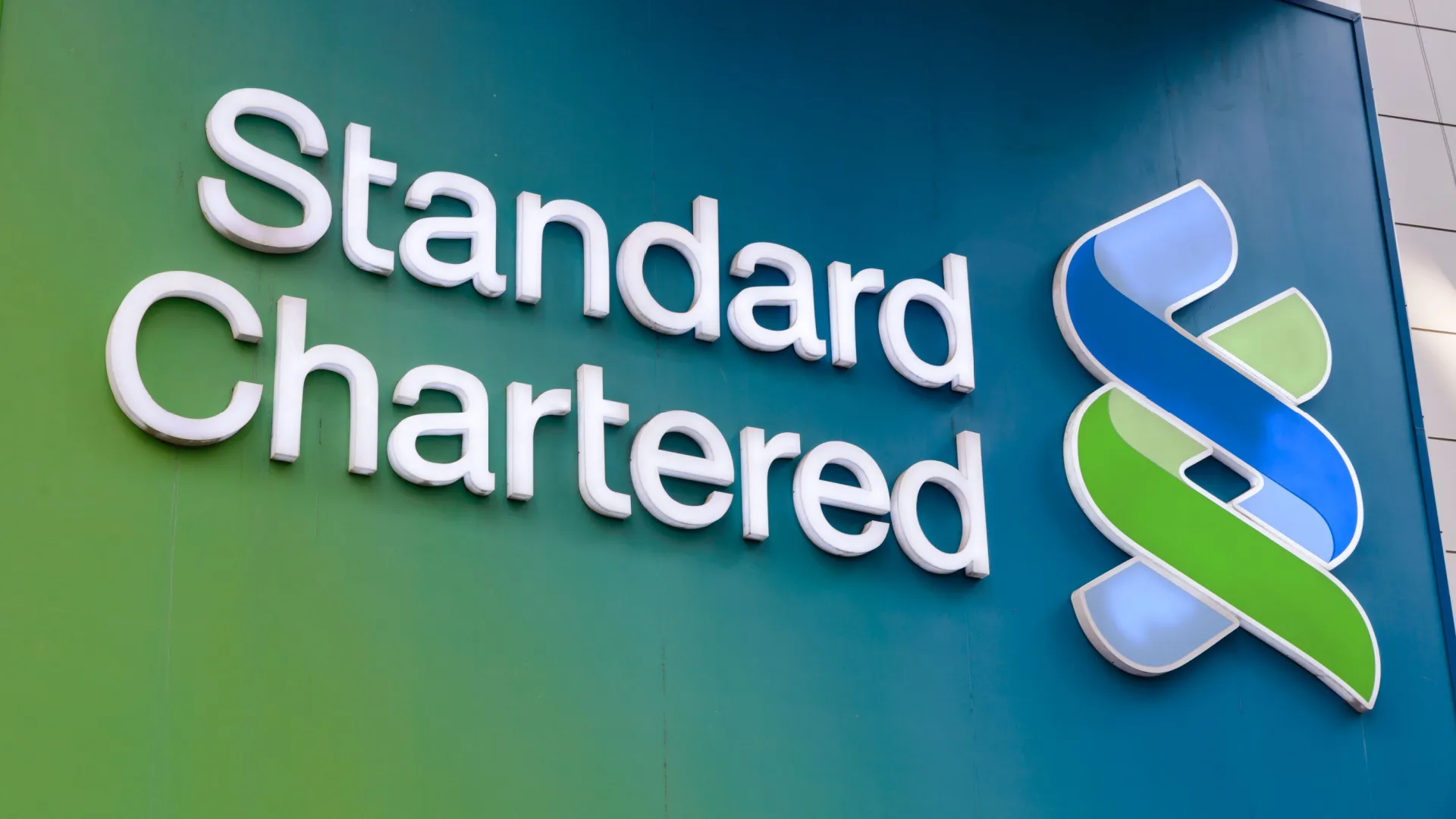In a landmark operation that has captured the attention of investors and market watchers alike, the Central Bank of Kenya (CBK) has successfully completed its first-ever domestic bond buyback, repurchasing bonds worth KSh 50.09 billion—marginally exceeding its target of KSh 50 billion. This strategic move, announced in February 2025, marks a significant milestone in Kenya’s efforts to manage its domestic debt profile and ease refinancing pressures as several key bonds approach maturity later this year.
A Historic First: The Debut Domestic Bond Buyback
The CBK’s initiative represents a pioneering effort in the Kenyan financial landscape. For the first time, investors were given an opportunity to sell back bonds before their intended maturity date, thereby providing immediate liquidity and reducing the looming refinancing burden set to hit mid-2025. The operation targeted three distinct bond issues, with a total underlying value of KSh 185.1 billion, comprising:
- A 3-year bond scheduled to mature in April 2025,
- A 5-year bond,
- And a 9-year infrastructure bond both set to mature in May 2025.
By buying back these bonds, the CBK not only met its target but also signaled its readiness to actively manage the country’s debt portfolio. This measure comes at a critical juncture, as the Kenyan government has simultaneously raised its domestic borrowing target for the 2024/25 fiscal year from KSh 413.1 billion to KSh 582.7 billion—a move that has intensified pressure on the domestic market.
Unpacking the Operation: Bonds, Bids, and Buyback Prices
Bond Issues and Investor Demand
Demand during the buyback was notably skewed towards the 5-year paper, which attracted offers totaling KSh 40.1 billion. The 3-year paper garnered bids worth KSh 10.3 billion, while the 9-year infrastructure bond, despite its longer maturity, received bids amounting to KSh 5.7 billion with an 11.48% performance rate. Overall, the buyback attracted a total of KSh 56.1 billion in bids, outstripping the CBK’s acceptance threshold of KSh 50.1 billion.
Investors were compensated based on a standardized buyback price per KSh 100 of face value, with yields varying slightly by bond type. For instance, the 5-year paper was repurchased at KSh 103.9422—this figure includes an accrued interest of 3.43. Meanwhile, the 9-year infrastructure bond and the 3-year paper returned KSh 104.1433 and KSh 104.6775 respectively, with the latter carrying an accrued interest of 4.3638. These carefully calculated figures ensured that investors received a fair return while also enabling the CBK to manage its debt more effectively.
Impact on Maturities and Future Borrowing
The buyback has strategic implications beyond the immediate liquidity injection. By repurchasing bonds that are set to mature in April and May 2025, the CBK is effectively reducing the total debt maturity profile—targeting an eventual reduction to KSh 135.1 billion in April-May maturities. This reduction comes at a time when the government is simultaneously ramping up its overall borrowing. In a related development, two reopened February infrastructure bonds were oversubscribed last week, with the government raising KSh 130.8 billion against an initial target of KSh 70 billion. Proceeds from these tax-free infrastructure bonds (IFBs) were partially funneled to finance the buyback, thereby linking different facets of Kenya’s debt market strategy.
The Broader Context: Government Borrowing and Macroeconomic Implications
Rising Borrowing Targets and Fiscal Pressures
The backdrop to the CBK’s bond buyback is a broader fiscal strategy that has seen the government increase its domestic borrowing target for the current fiscal year. The upward revision—from KSh 413.1 billion to KSh 582.7 billion—reflects both the growing funding needs of the government and the challenges posed by external financing constraints. This increased borrowing target is intended to bridge budget deficits, fund developmental projects, and stabilize public finances amid global economic uncertainties.
However, such an aggressive borrowing agenda also places additional stress on the domestic market. A higher volume of debt can lead to increased refinancing pressures as older bonds mature, potentially raising the cost of new debt issuance if market sentiment turns cautious. The CBK’s proactive bond buyback is thus viewed as a pre-emptive measure designed to mitigate these risks by smoothing out the maturity profile and providing breathing room for the government as it navigates its broader fiscal strategy.
Market Confidence and Debt Management
Analysts have noted that the successful execution of the buyback may boost market confidence. By demonstrating that the CBK can manage debt maturities effectively, the operation sets a positive precedent for future interventions. It also signals that the central bank is prepared to act decisively to ensure that refinancing pressures do not derail fiscal stability. The oversubscription seen in both the bond buyback and the recent reopening of the infrastructure bonds is indicative of strong investor appetite, suggesting that market participants view these measures as steps toward more robust debt management.
Expert Insights: Perspectives on the Buyback and Future Prospects
Commentary from Financial Analysts
Financial analysts have praised the CBK’s move as a “bold and necessary intervention” to prevent a potential liquidity crunch in the near term. Many experts argue that the buyback will ease refinancing pressures that are expected to intensify in mid-2025 as significant portions of the debt portfolio come due. By retiring a portion of the domestic bonds early, the CBK reduces the risk of a sudden spike in refinancing costs, which could otherwise force the government to pay higher interest rates on new debt.
One market commentator noted, “This buyback is a clear signal that the CBK is not only mindful of the current market dynamics but is also forward-looking in its debt management strategy. With fiscal pressures mounting, this move helps preserve investor confidence and sets the stage for a smoother debt rollover in the coming months.”
Government and CBK Officials Weigh In
While the CBK has provided detailed technical explanations for the buyback, government officials have also underscored the operation’s significance. In a statement, a spokesperson from the Ministry of Finance highlighted that the buyback aligns with broader efforts to stabilize public finances and manage the government’s borrowing needs more effectively. By reducing the volume of bonds maturing in the short term, the government hopes to alleviate market distortions and create a more predictable fiscal environment for both domestic and international investors.
CBK officials have reiterated that the operation is part of a broader suite of measures aimed at enhancing market liquidity and ensuring that Kenya’s debt profile remains sustainable over the long term. They pointed to the successful oversubscription of recent bond issuances as further evidence that the market is responding positively to these initiatives.
Historical Perspective: Evolution of Kenya’s Bond Market
Early Days and Market Maturation
Kenya’s bond market has evolved significantly over the past two decades. Historically, the market was characterized by a limited number of participants and relatively low trading volumes. However, as the government sought to diversify its financing sources and reduce reliance on external debt, the domestic bond market began to mature. Increased investor participation, coupled with reforms aimed at improving transparency and liquidity, has gradually transformed the landscape.
The debut domestic bond buyback marks a new chapter in this evolution. It demonstrates that the CBK is willing to adopt innovative measures to manage its debt portfolio actively. Such interventions are rare in many emerging markets, and Kenya’s proactive approach is now being closely monitored by other central banks in the region.
Lessons from Past Operations
Looking back, previous debt management operations in Kenya have primarily focused on debt restructuring and the issuance of longer-dated bonds to extend maturities. While these measures have had varying degrees of success, the current buyback represents a more aggressive and hands-on approach. It not only provides immediate relief to investors but also contributes to a more balanced maturity profile—a critical factor in maintaining long-term fiscal stability.
Moreover, by effectively pricing the buyback and managing accrued interest components, the CBK has set a benchmark for future operations. Investors now have greater clarity on the pricing mechanism and can better assess the relative merits of holding versus selling bonds ahead of maturity.
Implications for Future Borrowing and Economic Policy
Smoothing the Debt Maturity Profile
One of the primary objectives of the buyback is to smooth out the debt maturity profile. With a significant tranche of bonds maturing between April and May 2025, there is a genuine risk that a sudden surge in refinancing demand could overwhelm the market. By buying back bonds early, the CBK is effectively spreading out the maturity schedule, thereby reducing the risk of liquidity shortages and sharp increases in borrowing costs.
This approach not only helps in managing immediate refinancing risks but also creates a more stable environment for future bond issuances. Investors are likely to view the government’s debt management strategy more favorably if they see that potential refinancing pitfalls are being addressed proactively.
Broader Economic Ramifications
The implications of the bond buyback extend beyond the debt market. Effective debt management is a cornerstone of macroeconomic stability. By mitigating refinancing risks, the CBK helps ensure that fiscal policy can remain focused on growth-oriented initiatives rather than being derailed by market disruptions. This, in turn, supports broader economic objectives, such as infrastructure development, social spending, and efforts to boost investor confidence in Kenya’s economy.
Furthermore, the successful buyback operation may pave the way for additional innovative measures by the CBK. As emerging markets continue to grapple with similar challenges, Kenya’s experience could serve as a model for other countries looking to balance debt sustainability with growth imperatives.
Challenges and Risks Ahead
Market Volatility and Global Economic Pressures
Despite the success of the buyback, challenges remain. Global economic conditions—ranging from fluctuating commodity prices to shifts in investor sentiment—continue to pose risks to Kenya’s domestic debt market. While the CBK’s operation has been widely welcomed, there is no guarantee that similar levels of oversubscription will persist in future issuances, particularly if global risk appetites change.
Moreover, the increased domestic borrowing target for the 2024/25 fiscal year suggests that the government will need to continue accessing the domestic market aggressively. This reliance on domestic borrowing, while necessary for funding key initiatives, could expose the economy to interest rate fluctuations and potential liquidity constraints if not managed carefully.
Policy Coordination and Long-Term Strategy
To mitigate these risks, close coordination between the CBK, the Ministry of Finance, and other stakeholders will be essential. Policy measures must be calibrated to ensure that the short-term benefits of operations like the bond buyback translate into long-term fiscal stability. This includes maintaining transparent communication with investors, continuing to innovate in debt management practices, and aligning borrowing strategies with broader economic policy goals.
Analysts caution that while the current buyback has been a success, it should be viewed as one element in a comprehensive debt management framework. Sustained efforts will be required to ensure that Kenya’s borrowing remains sustainable, particularly in a global environment where economic shocks can occur with little warning.
Looking Forward: The Road to 2030
A Vision for Sustainable Debt Management
As Kenya navigates the complexities of domestic borrowing and fiscal management, the lessons learned from this debut bond buyback will likely inform future strategies. The operation has demonstrated that proactive measures can help smooth refinancing pressures and bolster investor confidence. Looking ahead to 2030, policymakers are expected to place an even greater emphasis on sustainable debt management practices that balance short-term needs with long-term fiscal health.
Key to this vision will be a diversified portfolio of financing instruments. In addition to traditional bonds, the government may increasingly explore alternative instruments such as green bonds or sukuk—financial products designed to attract a broader base of investors and promote specific policy objectives, including environmental sustainability and financial inclusion.
Strategic Partnerships and Institutional Reforms
Another critical component of future success will be the strengthening of institutional frameworks. Continued reforms aimed at increasing transparency, enhancing market liquidity, and promoting robust investor relations will be essential. By building on the foundation laid by the recent buyback, Kenya’s financial authorities can foster a more resilient and dynamic debt market that is better equipped to handle future challenges.
Furthermore, strategic partnerships with international financial institutions and development finance institutions (DFIs) could provide additional support. These collaborations may offer technical assistance, market insights, and even direct financial support to help manage and reduce the overall cost of borrowing.
Concluding Reflections
The successful closure of Kenya’s KSh 50bn debut domestic bond buyback is a testament to the Central Bank of Kenya’s innovative approach to debt management and its commitment to ensuring fiscal stability. By repurchasing bonds ahead of maturity, the CBK has not only alleviated immediate refinancing pressures but also set a strong precedent for future market operations.
This operation, occurring amid an environment of increased domestic borrowing and heightened fiscal pressures, sends a clear message to investors: Kenya’s financial authorities are prepared to take decisive action to manage risk and maintain market confidence. With oversubscription across multiple bond issues and favorable pricing outcomes, the buyback has reinforced the resilience of Kenya’s debt market and showcased the potential for further innovations in fiscal policy.
As the government ramps up its borrowing for the 2024/25 fiscal year and navigates global economic uncertainties, the lessons learned from this operation will be crucial. Through continued policy coordination, institutional reforms, and strategic innovation, Kenya is well-positioned to not only manage its current debt obligations but also lay the groundwork for sustainable economic growth in the years ahead.
The road to 2030 will undoubtedly present its own set of challenges, yet the proactive measures taken today—exemplified by the CBK’s domestic bond buyback—offer a blueprint for a more secure and stable fiscal future. For investors, policymakers, and market observers alike, this development is a promising sign that Kenya is committed to navigating the complexities of modern debt management while remaining steadfast in its pursuit of long-term economic prosperity.
In a global context where emerging markets are increasingly looked upon as both opportunities and risks, Kenya’s latest move may well serve as a model for other nations facing similar challenges. By balancing the need for immediate fiscal relief with the imperative of long-term stability, the Central Bank of Kenya has demonstrated that even in times of heightened borrowing pressures, innovative and well-executed financial strategies can pave the way for a brighter economic future.
Ready to take your career to the next level? Join our dynamic courses: ACCA, HESI A2, ATI TEAS 7 , HESI EXIT , NCLEX – RN and NCLEX – PN, Financial Literacy!🌟 Dive into a world of opportunities and empower yourself for success. Explore more at Serrari Ed and start your exciting journey today! ✨
photo source: Google
By: Montel Kamau
Serrari Financial Analyst
21st February, 2025
Article, Financial and News Disclaimer
The Value of a Financial Advisor
While this article offers valuable insights, it is essential to recognize that personal finance can be highly complex and unique to each individual. A financial advisor provides professional expertise and personalized guidance to help you make well-informed decisions tailored to your specific circumstances and goals.
Beyond offering knowledge, a financial advisor serves as a trusted partner to help you stay disciplined, avoid common pitfalls, and remain focused on your long-term objectives. Their perspective and experience can complement your own efforts, enhancing your financial well-being and ensuring a more confident approach to managing your finances.
Disclaimer: This article is for informational purposes only and does not constitute financial advice. Readers are encouraged to consult a licensed financial advisor to obtain guidance specific to their financial situation.
Article and News Disclaimer
The information provided on www.serrarigroup.com is for general informational purposes only. While we strive to keep the information up to date and accurate, we make no representations or warranties of any kind, express or implied, about the completeness, accuracy, reliability, suitability, or availability with respect to the website or the information, products, services, or related graphics contained on the website for any purpose. Any reliance you place on such information is therefore strictly at your own risk.
www.serrarigroup.com is not responsible for any errors or omissions, or for the results obtained from the use of this information. All information on the website is provided on an as-is basis, with no guarantee of completeness, accuracy, timeliness, or of the results obtained from the use of this information, and without warranty of any kind, express or implied, including but not limited to warranties of performance, merchantability, and fitness for a particular purpose.
In no event will www.serrarigroup.com be liable to you or anyone else for any decision made or action taken in reliance on the information provided on the website or for any consequential, special, or similar damages, even if advised of the possibility of such damages.
The articles, news, and information presented on www.serrarigroup.com reflect the opinions of the respective authors and contributors and do not necessarily represent the views of the website or its management. Any views or opinions expressed are solely those of the individual authors and do not represent the website's views or opinions as a whole.
The content on www.serrarigroup.com may include links to external websites, which are provided for convenience and informational purposes only. We have no control over the nature, content, and availability of those sites. The inclusion of any links does not necessarily imply a recommendation or endorsement of the views expressed within them.
Every effort is made to keep the website up and running smoothly. However, www.serrarigroup.com takes no responsibility for, and will not be liable for, the website being temporarily unavailable due to technical issues beyond our control.
Please note that laws, regulations, and information can change rapidly, and we advise you to conduct further research and seek professional advice when necessary.
By using www.serrarigroup.com, you agree to this disclaimer and its terms. If you do not agree with this disclaimer, please do not use the website.
www.serrarigroup.com, reserves the right to update, modify, or remove any part of this disclaimer without prior notice. It is your responsibility to review this disclaimer periodically for changes.
Serrari Group 2025












